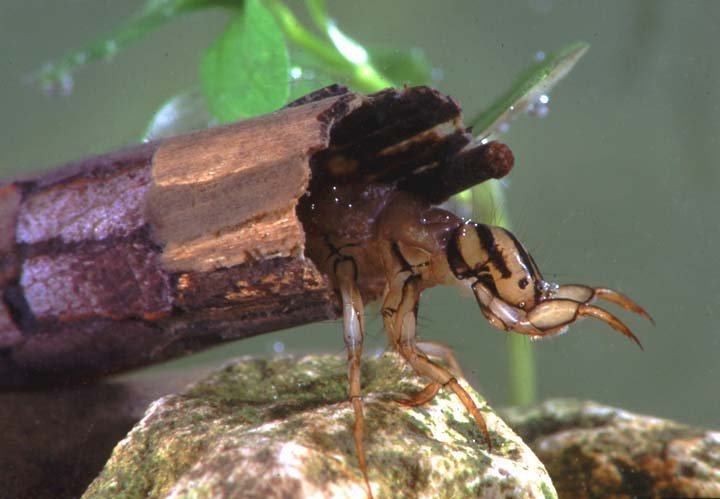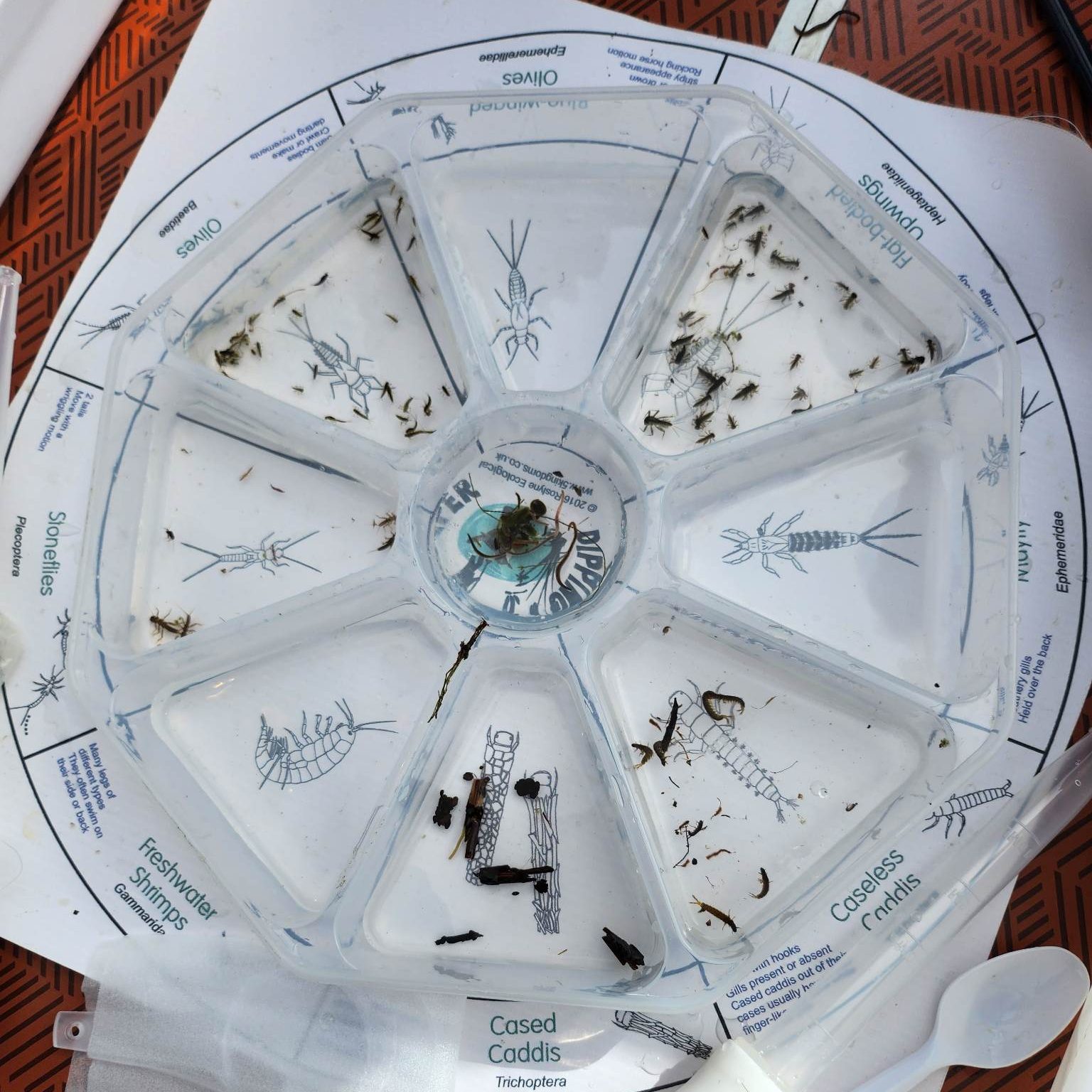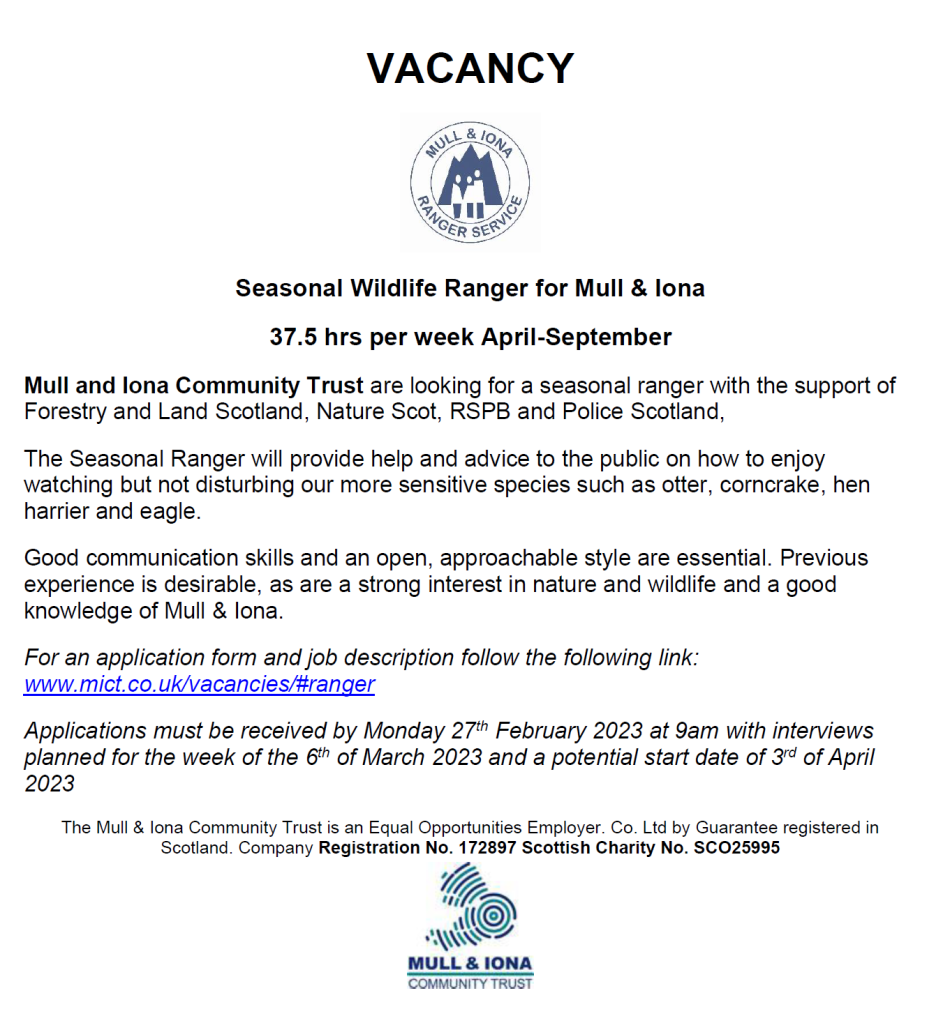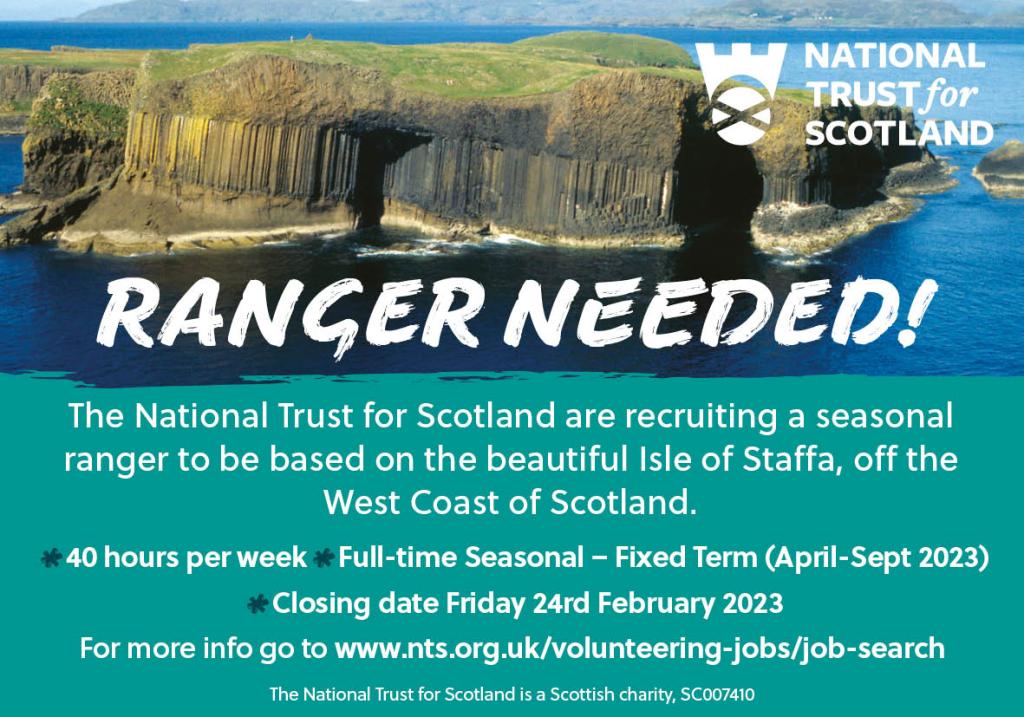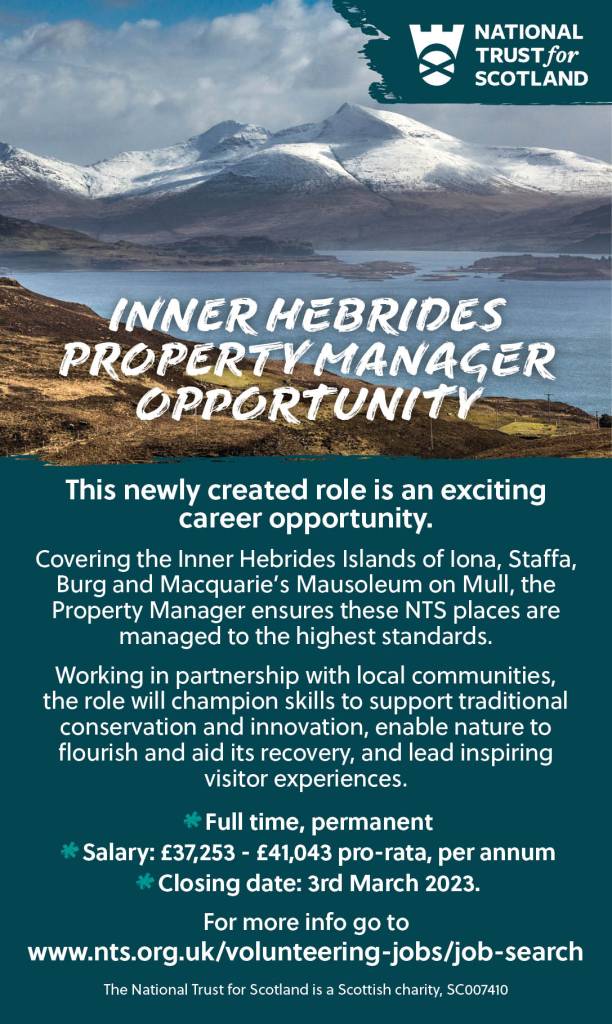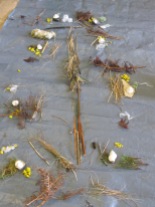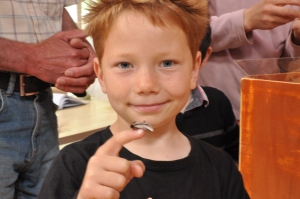What is it?
Back at the end of April, Rebecca Lewis from Buglife joined us on Mull to lead a Riverfly training session on the River Aros.
The Riverfly Partnership (RP) was formed in 2004 and brings together anglers, conservationists, entomologists, scientists, watercourse managers and government agencies to increase our knowledge of riverfly populations and actively conserve their habitats.
One of the RP’s leading projects, launched in 2007, is the ‘Anglers Monitoring Initiative (AMI)’. The AMI enables trained volunteer groups to apply a simple monitoring technique to record the presence and absence of 8 invertebrate groups, 7 of which are riverflies. This allows us to monitor the biological water quality of our rivers. The volunteer groups monitor their local rivers on a regular, often monthly, basis and if severe changes are detected a rapid response by the statutory bodies is ensured.
“Empowering citizens to protect their rivers“
The Riverfly Partnership
Training on the River Aros
We now have a small group of trained volunteers on the island who undertook an online training session, followed by spending a few hours with Rebecca on the banks of the Aros to put into practice the sampling and monitoring skills.
The sample collection itself takes only four minutes in total, with three minutes of kick sampling and a further one minute of rock sampling, then the fun part begins!
We spent a significant amount of time pouring over our trays that were filled with a veritable smorgasbord of aquatic invertebrates. We were able to separate individuals into eight groups with the help of a fantastic sorting mat (we can’t wait to use this with adults and schools). This included Stoneflies, Mayflies, Cased Caddis and Freshwater Shrimps. We were pleased to find a great mixture of species and some that aren’t included within the eight groups like Freshwater Limpets, snails and worms. We counted and scored our sample, which will be used as our baseline for future surveys here.
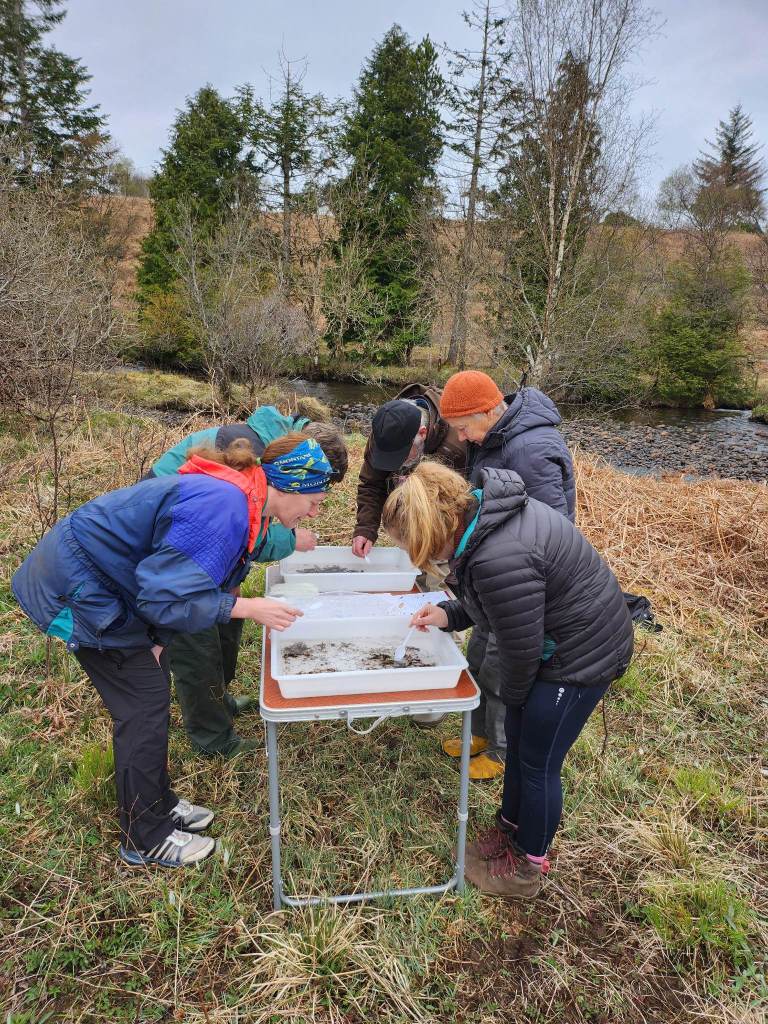
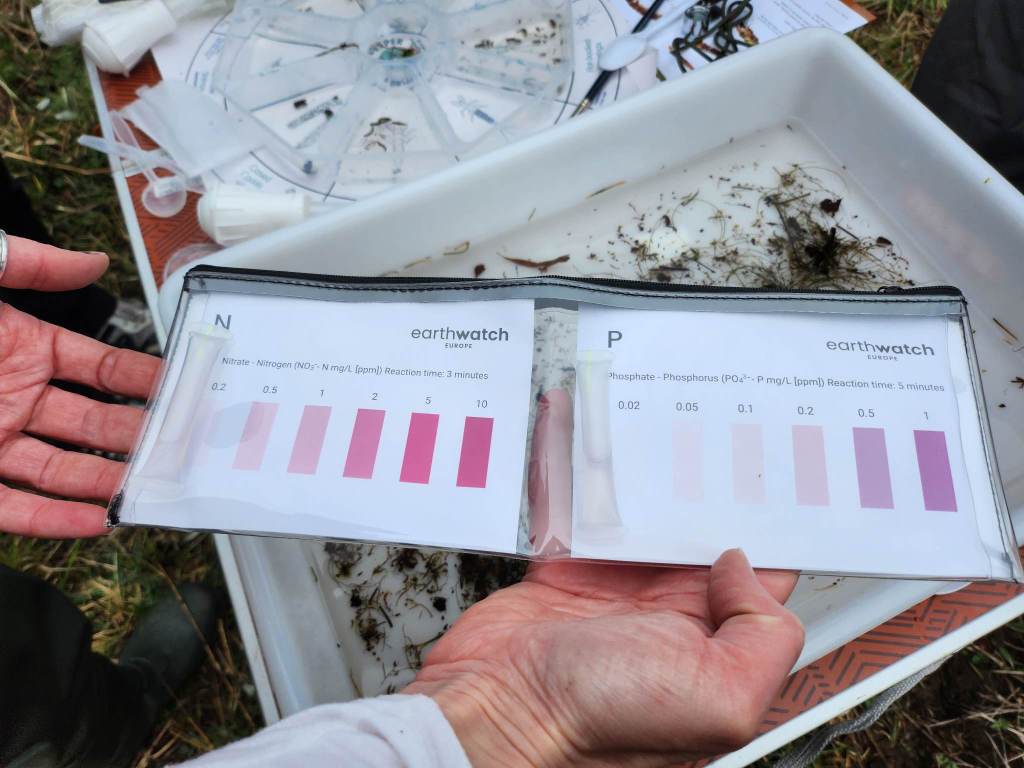
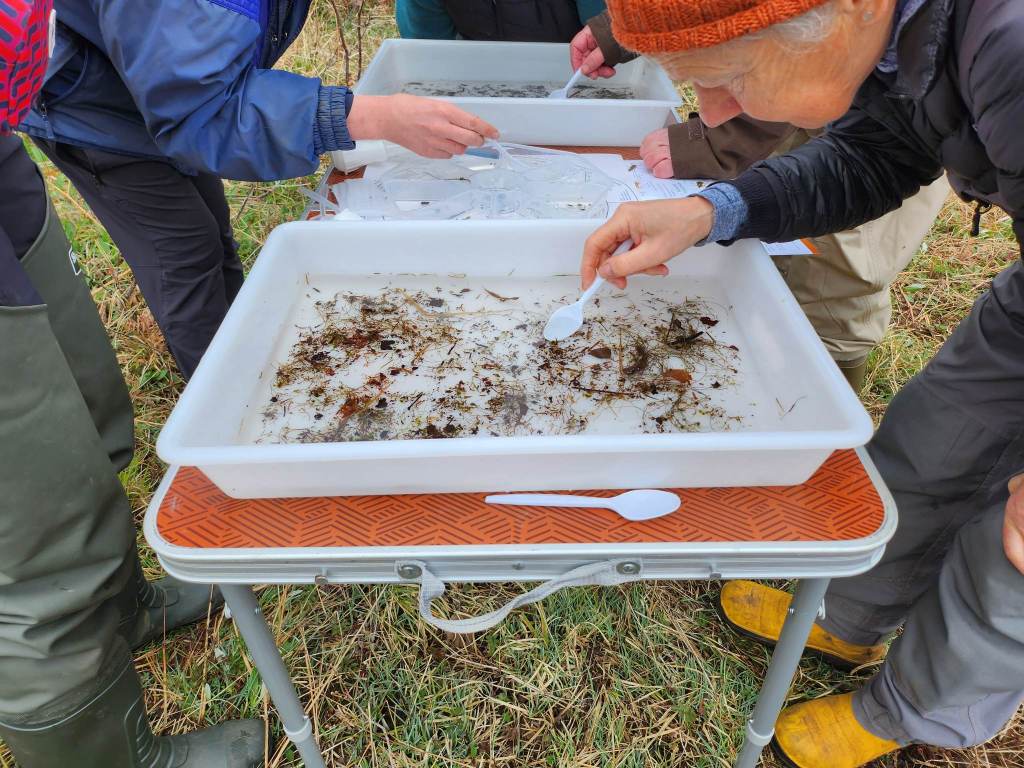
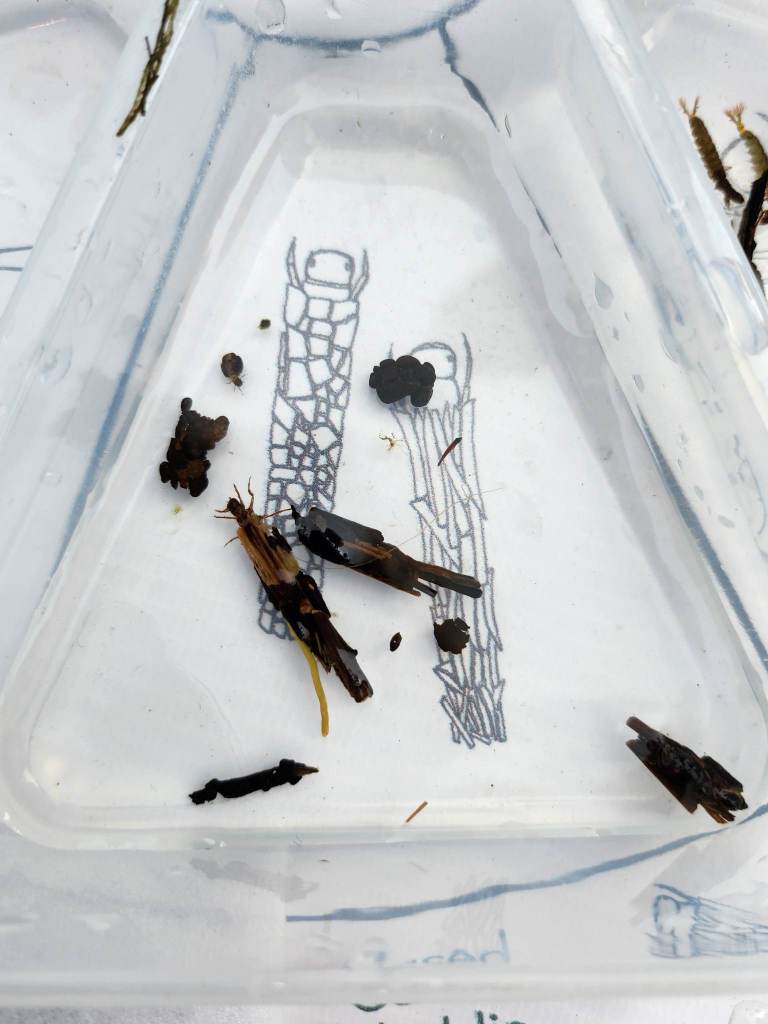
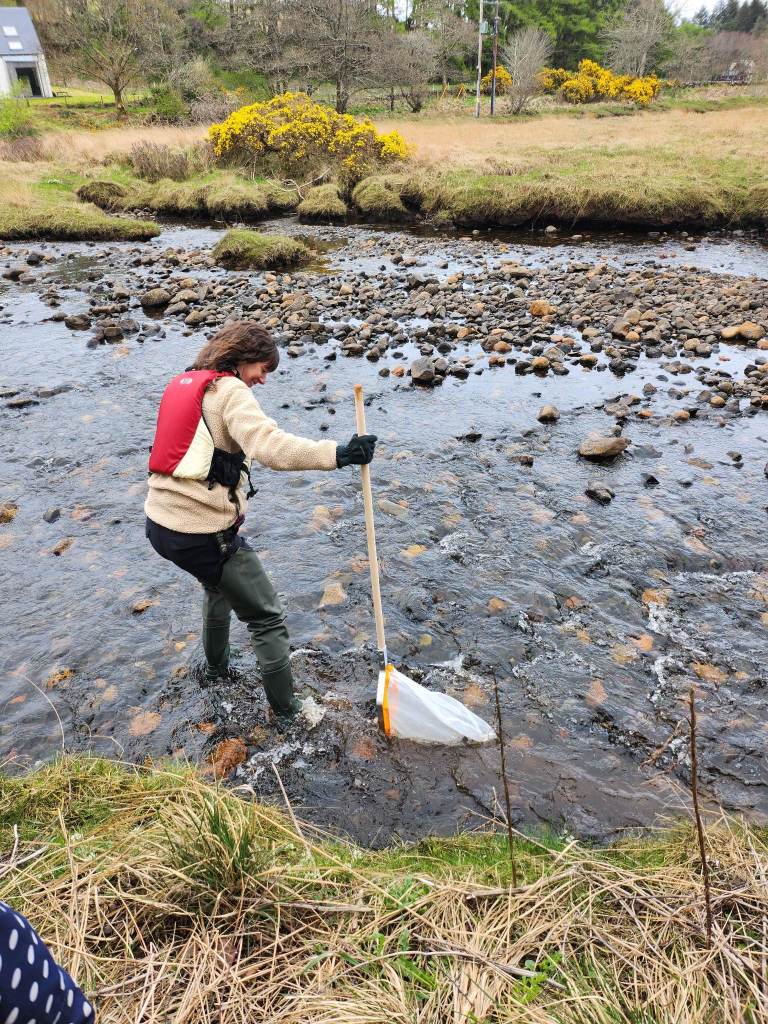
Volunteers Wanted!
We plan to have three sample sites along the River Aros which will be surveyed by volunteers roughly every six weeks. We have a small group of volunteers who attended both the online training and the practical session but we’d love to welcome others to join and develop their skills. We hope to be able to provide more training in the future with Buglife and this will be an opportunity open to those those who join us.
We’re keen to develop a core group which can share out the survey sites along the river and share out each of the survey dates to lighten the load and make sure it’s a fun and friendly experience. The minimum would be at least two people running a survey but the more the merrier and we can always bring along a hot drink and slice of cake to enjoy together on the river bank!
We’re also hoping to start surveying the River Lussa which runs adjacent to Ardura Community Forest. This will help us to keep track of any changes in the river system as the community forest begins to implement it’s long term biodiversity action plan – hopefully we’ll see positive changes in the riverfly populations as native trees are re-established.
How to get involved…
Come along and join us for our next survey on the River Aros on Sunday 11th June.
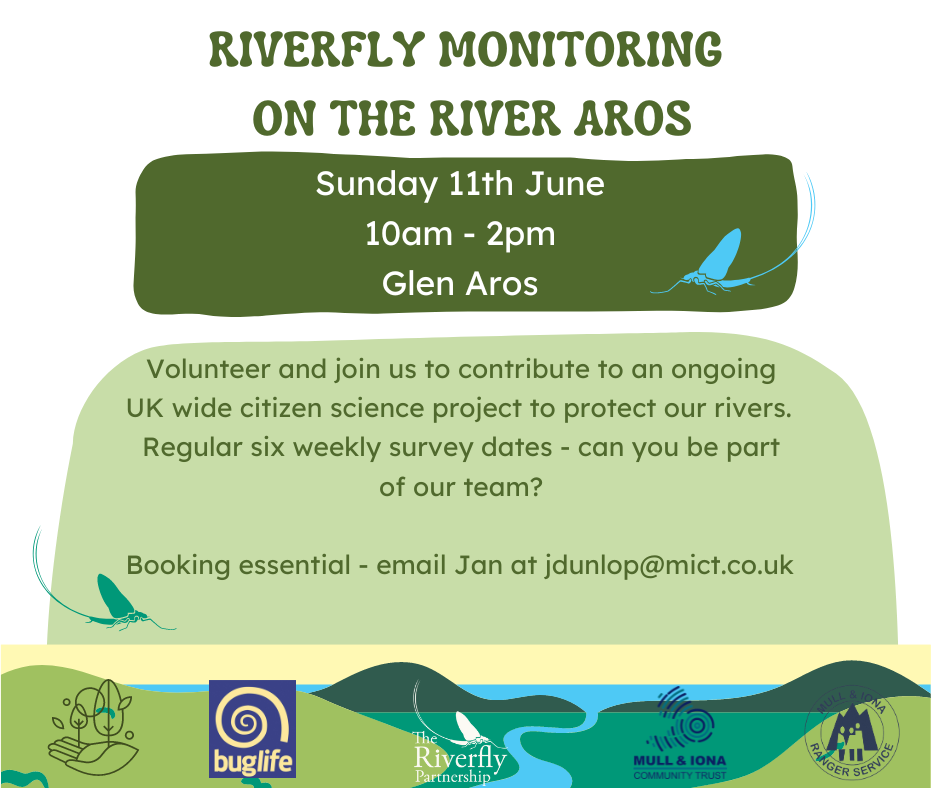
Jan and I will be there to support those volunteering and we’ll continue to learn together.
Buglife also provided us with specialist equipment including a few sizes of waders and buoyancy aids but it is not necessary to enter the water if you don’t want to. The actual sample collection time in the river is small and the identifying and counting is where we really need support.
If you think you’d like to get involved, do contact either Jan (jdunlop@mict.co.uk) or Rachel (rfrench@mict.co.uk) and we can answer any of your questions.
